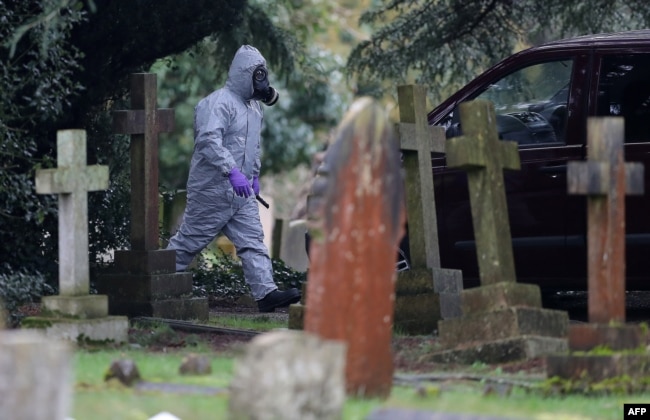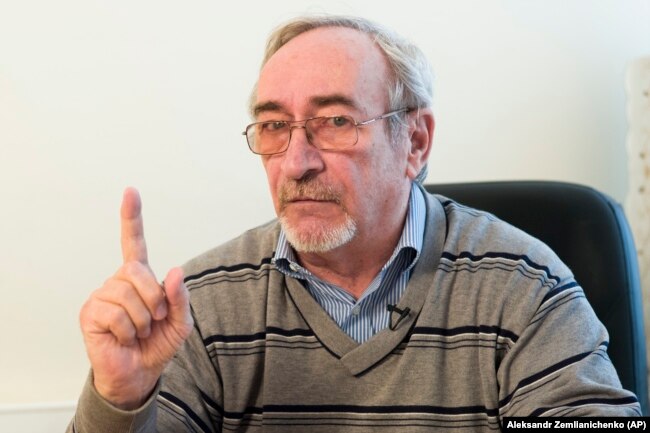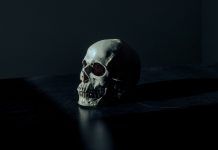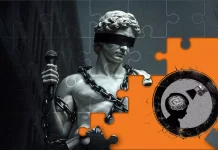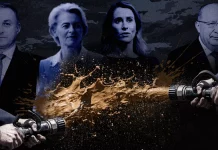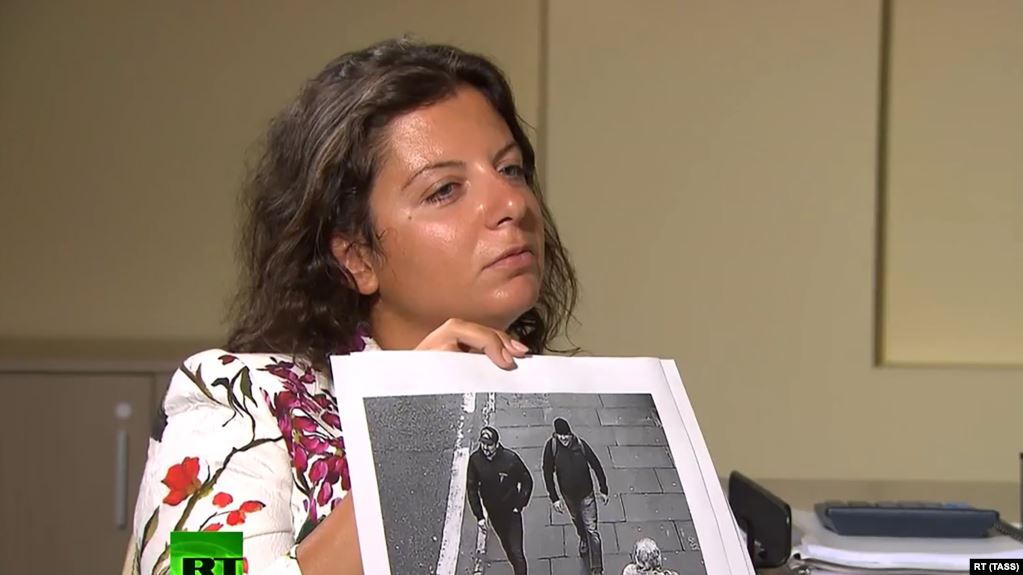
By Polygraph
“Sanctions and accusations are poor substitute for evidence. And the latter lacks utterly.”
False
The evidence ties Moscow to Skripal poisoning despite Russian embassy claims
On August 2, the U.S. State Department announced it would impose a second round of sanctions on Russia under the Chemical and Biological Weapons Control and Warfare Elimination Act.
The State Department said the additional sanctions are being levied against Russia “for its use of a ‘Novichok’ nerve agent in an attempt to assassinate Sergei Skripal and his daughter Yulia Skripal in the United Kingdom on March 4, 2018.”
The statement added that that act had “endangered thousands of lives,” leading to one death, and the hospitalization of the Skripals and others.
The new sanctions are aimed in part at limiting the export of technology that could aid Russia in the development of chemical and biological weapons.
U.K. Foreign Secretary and First Secretary of State Dominic Raab welcomed the sanctions, tweeting the “continued global response shows we will not stand & watch these horrific weapons be used without consequences.”
We welcome unwavering US support today, with the introduction of Chemical & Biological Weapons Sanctions in response to Russia’s use of a deadly nerve agent in Salisbury. Continued global response shows we will not stand & watch these horrific weapons be used without consequences
— Dominic Raab (@DominicRaab) August 3, 2019
Russia’s embassy in London replied to Raab that “sanctions and accusations are poor substitute for evidence,” adding that the latter “lacks utterly.”
Sanctions and accusations are poor substitute for evidence. And the latter lacks utterly. https://t.co/4N7UNkFbTA
— Russian Embassy, UK (@RussianEmbassy) August 4, 2019
This is false.
In April 2018, The Organization for the Prohibition of Chemical Weapons (OPCW) backed the U.K. government’s findings that the agent used against the Skripals was from the Novichok series of military-grade nerve agents, which were developed in the Soviet Union and Russia from 1971-93.
The OPCW was not able to determine the origin of the Novichok deployed in the Skripal attack, while a chemist who worked with Novichok at a chemical weapons facility near the Russian city of Saratov has cast doubt on claims of Russia’s involvement in the attack.
The chemist, Leonid Rink, told the Russian state news agency RIA Novosti in March 2018: “It’s hard to believe that the Russians were involved, given that all of those caught up in the incident are still alive.” Rink also claimed that any country possessing a weapons-of-mass-destruction infrastructure or “at least some chemistry” could have developed the chemical agent that poisoned the Skripals.
According to a criminal investigation of the poisoning of Russian business leader Ivan Kivelidi in Moscow in 1995, Rink was questioned for selling capsules of Novichok that ended up in the hands of various criminal groups, including from Chechnya.
Russian who developed Novichok “certain” it was used in Yeltsin-era killing of Moscow banker, says origin will remain a mystery. https://t.co/6xEtITR5pz pic.twitter.com/WqqSJH5sRA
— Radio Free Europe/Radio Liberty (@RFERL) April 21, 2018
Vil Mirzayanov, a chemist and former counter-intelligence department head at the secret Soviet military chemical weapons facility where Novichok was developed, told the U.K.’s Guardian newspaper the Russian state was the only viable culprit in the Salisbury attack.
“No one country has these capabilities like Russia, because Russia invented, tested and weaponized novichok,” he said.
Russian spy poisoning: chemist says only a ‘high-level’ person could carry out attack https://t.co/A3ELVNXVgc
— The Guardian (@guardian) March 16, 2018
However, Mirzayanov told the Voice of America in a March 2018 interview: “The British could easily have synthesized it [Novichok] on the basis of the formulas that I published in my book, published in 2008 (State Secrets: An Insider’s Chronicle of the Russian Chemical Weapons Program Secrets). Each country takes care of its own security, and as part of the study of possible threats, a model could have been created.”
Mirzayanov added that while test samples could be from “many countries,” the production of Novichok “was fine-tuned only in the USSR (former Union of Soviet Socialist Republics) and Russia.”
While questions remain over the manufacture of the Novichok employed in the Salisbury attack, the identities of the attackers is better established.
The suspects, operating under the aliases Ruslan Boshirov and Alexander Petrov, were identified as GRU (Russian military intelligence) agents Colonel Anatoliy Chepiga and Alexander Mishkin by The Insider, a Russian investigative news site, in conjunction with the investigative group Bellingcat.
A third suspected GRU agent, Denis Sergeyev (aka Sergey Fedotov), was also in the U.K. at the time of the poisoning. His alleged role in the attack remains unclear.
GRU officer Denis Sergeev’s travels through Switzerland occasionally coincided with visits to Switzerland by the other two Skripal suspects and GRU officers Col. Alexander Mishkin and Col. Anatoli Chepiga, suggesting they worked together on a regular basis. pic.twitter.com/VYkNmcMsx2
— Eliot Higgins (@EliotHiggins) July 6, 2019
During an interview with RT editor in chief Margarita Simonyan, Chepiga and Mishkin, who were in Salisbury on the day of the attack, claimed they were “just friends,” “civilians,” and tourists” visiting the town’s “famous cathedral.”
However, Ambassador Karen Pierce, the U.K.’s Permanent Representative to the UN, said the trail of evidence linking Chepiga and Mishkin to the attack is quite clear.
“CCTV and other evidence records their travel to and from Salisbury and crucially, there are images which clearly places them in the vicinity of the Skripal’s house at 11:58 A.M. on Sunday, 4 March. This was moments before the attack took place, which involved placing the substance on the Skripal’s front door handle,” she said.
The police timeline had the suspects returning to Moscow on the same day the Skripals were poisoned.
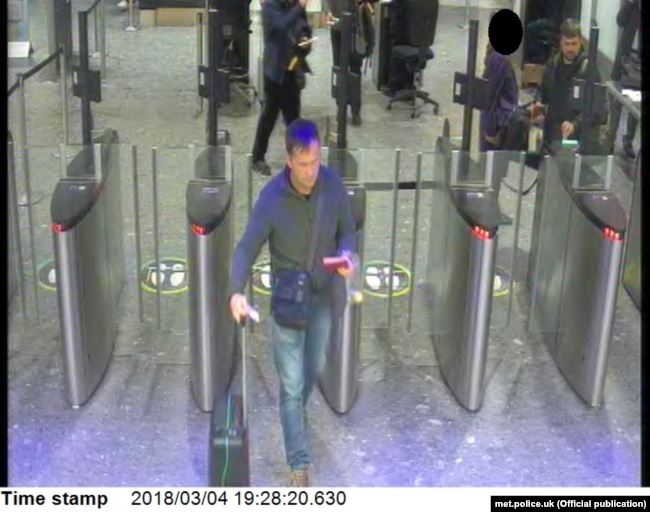
In November 2018, British authorities released CCTV footage showing Chepiga and Mishkin walking past a gas station on Wilton Road near the Skripals’ home.
The Salisbury Cathedral, whose spire is visible from the train station, is in the opposite direction of the victim’s residence.
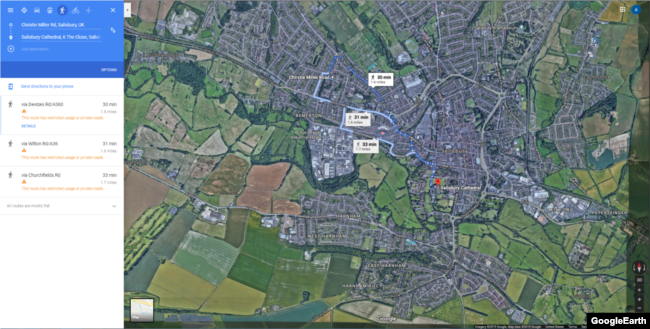
Traces of Novichok were later found in the London hotel where the two men stayed. A perfume bottle that held the chemical agent was also recovered.
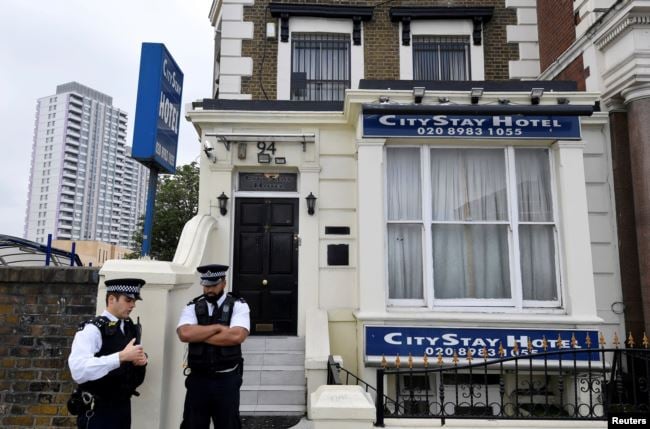
Russia’s U.K. Embassy has previously cited false theories to deflect blame from the Kremlin, including the baseless claim that the Skripals had driven to a top-secret chemical weapons lab on the day of the attack.
While questions remain about the poisoning of the Skripals, Polygraph.info finds the claim that there is an utter lack of evidence linking Moscow to the attack to be false.
By Polygraph


